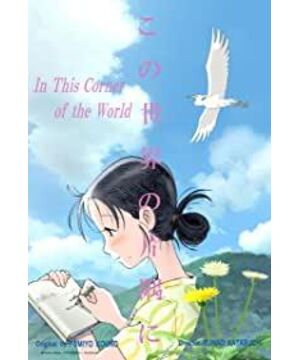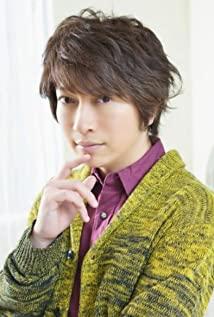First, the character setting of the film's protagonist paves the way for historical input. The protagonist of this film is a cute girl who likes to draw and lives a plain and beautiful life. She is kind and innocent, industrious and forbearing, even a little dull and lacking in opinion. This typical cartoon character setting not only gains more recognition and favor from the audience, but also makes the film's historical view more effectively conveyed to the audience, reducing the audience's vigilance against the "victim" historical view.
Because only this kind of stupid heroine will not have doubts about the situation in front of the people, and will not further question the legitimacy of the Japanese authorities' war behavior. Only such a dull heroine can make this "patriotic" story of "people agree with the war" to speak for itself. In order to enhance the patriotic tragic element, the film allows her to have the talent of a painter, and then uses the war to win her right hand for painting. Here, the audience will only condemn the enemy's artillery fire, but will not reflect on the deep reasons.
Therefore, in order to enhance the output of the historical view, the film ignores the rationality of the characters' psychological transformation. For example, the Emperor of Japan announced to the whole of Japan through the broadcast that the unconditional surrender was implemented and the war was over. She cried out loudly: Is the war over like this? Didn't you say you have to fight to the last person? I still have to fight! On the surface, the film expresses the tenacious will of the people, but inside it contains a chilling view of history. One-sided emphasis on the people's tenacity in the face of war, without thinking about the reasons for the current disaster, is actually a historical evasion, and it is also a kind of ignorant propaganda. In this regard, the famous Japanese director Haruhiko Arai publicly stated: This film is still the old-fashioned "war = victimized film" model, which is already wrong in terms of historical perspective.
Secondly, this view of history is also reflected in the adaptation of the original work. The cartoon "In this Corner of the World" does not have many adaptations of the original comic book, which can be said to be a model of respecting the original work. However, it is intriguing that the cartoon has changed a dialogue in the original book. The dialogue of Xiaoling in the original book is "The Japanese government wants to use violence to make other countries submit, and finally submit to violence", and the cartoon is changed to: "So do we have to submit to violence?" After the adaptation of the film, the film subtly avoided the cause of the tragedy of war.
Perhaps some readers will say that the protagonist of the film has such a character, and it has nothing to do with the concept of history. It is true that the characters in the film often have character characteristics, even shortcomings, and may even have historical limitations, but the character design of the characters is in the hands of the creators. This requires that the historical view of the film creator must be very clear. On the other hand, German anti-war films, such as "The Tin Drum" and other excellent works, not only criticized the Nazi Party, but also criticized the people trapped in the militarism quagmire, and restored the true colors of history as comprehensively and truly as possible.
Excerpted from "Nuclear Anxiety: The 'Victim' History of Postwar Japanese Cinema"
View more about In This Corner of the World reviews











